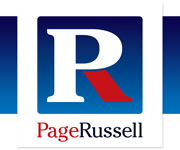Investment: Getting the right blend
How much mixer do you like with your spirits?
Investors are faced with bewildering jargon to describe the funds they can invest in. Fortunately, whatever the label on your investment, it will be made up of a mix of the following main investment types:
- Cash,
- Fixed interest (also called bonds),
- Equities (also called company stocks and shares), or
- Commercial property (factories, shops and offices).
It might make sense to think of these different investment types as different flavours. The four investment flavours can be split into two to make things even simpler:
- Growth Assets Equities and commercial property grow faster than inflation over the long term, but their values may go up or down more than you are happy with over the short term. You can think of growth assets as being a bit like neat spirits. It gets you drunk quickly but the side effects are too unpleasant for all but a few.
- Defensive Assets Cash and fixed interest (or bond) returns are lower than those of the growth assets over the long term, but any changes in value are less alarming too. Just like adding a mixer to a spirit, you add defensive assets to make your investment palatable. You should get to the same destination, over a longer time period and without the nasty side effects.
Hershey or Nestlé? – The two approaches to blending your investments
The variables of risk and return drive the two main methods of blending investments. Whilst it is a sweeping generalisation, it’s convenient to label the two approaches as the American or Swiss way. The American way is to concentrate on the risk required and blend the investment to meet that need – no matter what the associated risk is. The Swiss way is to blend the investment based on the risk you prefer and can afford then blend the investment. The down side is that the expected rate of return may not be enough to meet your financial goals.
It is your money
You will have to live with the ups and downs with any investment strategy; therefore PageRussell adopt the Swiss approach. Comfort comes at a price. You may have to do one or more of the following:
- Adapt your goals,
- Save more, or
- Accept more risk.
Having a financial plan makes it possible to work out which combination of strategies is best for you.

